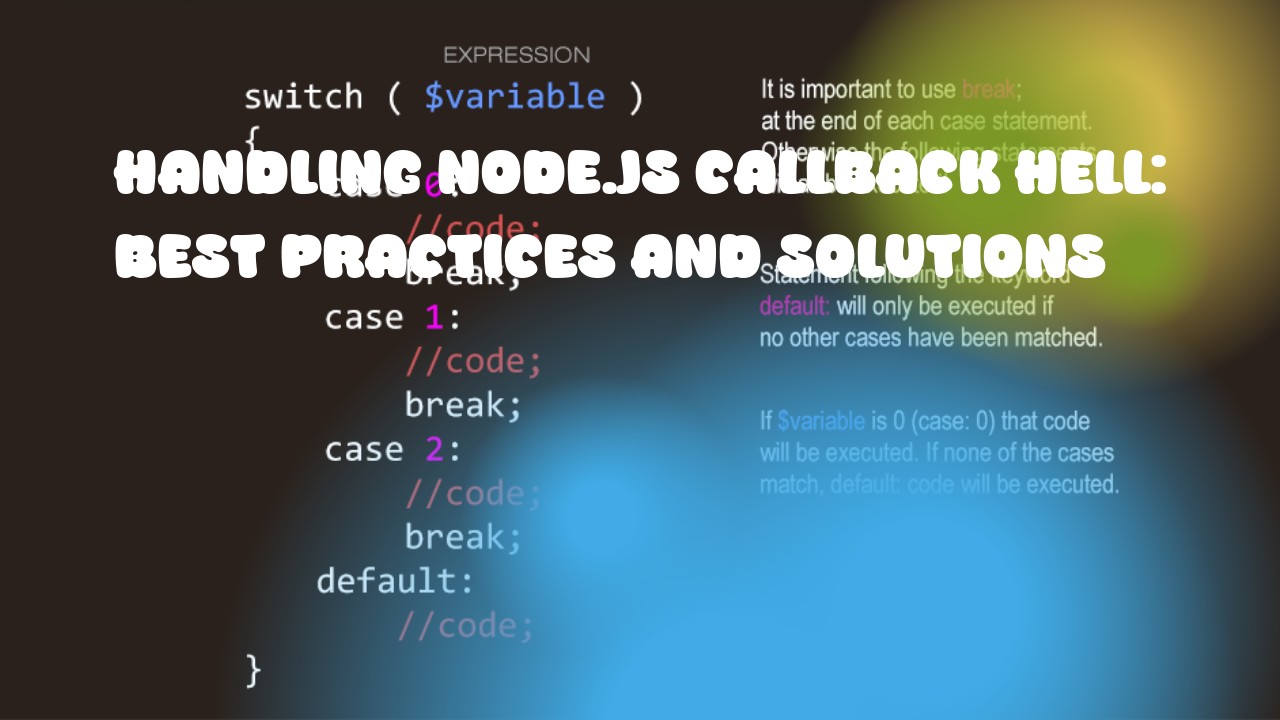Node.js is a popular choice for building server-side applications due to its asynchronous nature, but one of the main drawbacks is Callback Hell. Here are some best practices and solutions for handling Callback Hell in Node.js:
-
Use Async/Await Syntax: One of the most modern and recommended approaches for dealing with Callback Hell in Node.js is to use the async/await syntax introduced in ES7. This allows you to write asynchronous code in a synchronous way, which makes it easier to read and maintain. Here's an example:
async function myAsyncFunction() { try { let result = await MyPromise(); console.log(result); } catch (error) { console.error(error); } } MyAsyncFunction(); -
Use Promises: Another approach is to use promises, which are a built-in feature of Node.js and can be returned from asynchronous functions. This allows you to chain multiple asynchronous operations together without having to nest callbacks. Here's an example:
MyPromise().then((result) => { console.log(result); }).catch((error) => { console.error(error); }); -
Use Libraries and Frameworks: There are many libraries and frameworks that can help you handle Callback Hell, such as Async and Bluebird. These libraries provide higher-order functions for working with Promises and Callbacks, making it easier to read and maintain code.
-
Use Modularization: One of the main reasons for using Callback Hell in Node.js is that it can be difficult to test your code because it's tightly coupled with other parts of your application. To reduce this problem, consider modularizing your code into smaller functions and modules, which can make testing easier and maintainability better.
-
Use Error-First Callback Pattern: Finally, it's important to adhere to the error-first callback pattern in Node.js. This means that callbacks passed to asynchronous functions should always have two parameters: an error object (if there was an error) and a result object (if there was no error). This makes it easier to handle errors and make your code more robust.

